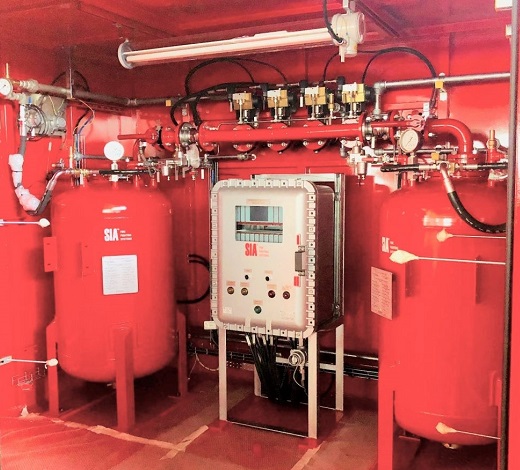Wet Chemical Systems are ideally suited to meet the demands associated in today’s business like catering facilities which is important characteristic of auto-ignition liquid fires such as grease. Cooking grease at room temperature is not a problem but for example Its vapors are not easily ignited.
However, when heated an auto-ignition liquid extinguishing the fire alone and removing the heat source may not prevent it and ignition can occur again until the liquid cooled below its auto-ignition temperature.
Extinguishing Action
The Wet Chemical Extinguishing agent is a potassium carbonate based solution which is discharged as fine droplets into a protected area. The main extinguishing action is cooling, which caused by the heat of vaporization. The fine spray discharge prevents the dangerous splash of hot grease or thermal shock damage to cooking appliances.
Re-ignition is prevented by saponification, a process which the wet chemical agent combines with the grease to form a soapy layer at the surface of grease to seal off the fuel from the oxygen that allowing the grease be cool to below its auto-ignition temperature.
|
|
InstallationThe Installation of fixed firefighting equipment in busy catering facilities requires extensive experience in the scheduling and performance of this type of work. Pipework for Wet Chemical systems may be black, chrome plated or stainless steel to suit the particular requirements of the application. ApplicationThe system operates at a nominal pressure of 12 bar (175p.s.i.) providing a fine spray discharge lasting for a nominal 45 seconds. The unique nature of the Wet Chemical Extinguishing Agent eliminates many of the piping limitations commonly associated with dry chemical systems. Clean-UpWet Chemical agent unlike Dry Powder may be quickly cleaned up following a discharge resulting. StorageWet Chemical system utilize storage containers in a range of sizes to suit the individual requirements of the hazard. ControlsThe Wet Chemical system may be controlled manually or automatically using electrical detection equipment or mechanical fusible link devices. |


